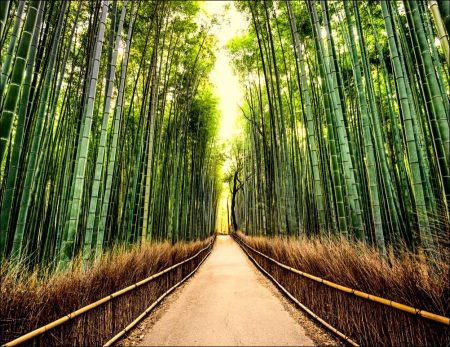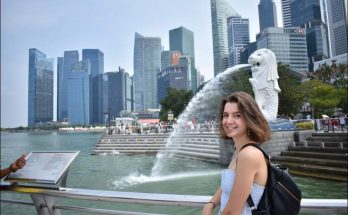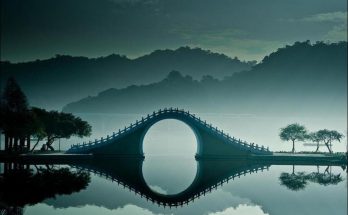If this were a guide-website to serve tourists on the spot, it would have been necessary to write this part of the chapter first. However, there are several excellent guide-books specially devoted to Kyoto, and here I shall try only to shed a little light on that phase of Kyoto which makes the strongest appeal to those going about with no other purpose than to look around and enjoy novelties in scenery and in life.
If Kyoto is a charming Mecca of all foreign tourists to Japan, it is no less so to the Japanese whose lot it is to dwell outside its radius. It is always full of visitors from every part of Japan. Even Osaka, inside of an hour by bus, looks upon it as its premier holiday land. Many wealthy persons there are, even in the Kwanto district, who have villas in the quieter parts of Kyoto that they may recur to them from time to time and enjoy Kyoto’s many aspects under its varying moods.
The very approaches to the city are picturesque. Coming from any direction, the visitor is greeted either by the indigo-blue bamboo bushes, the fresh and clear, babbling river, or by the quaint low-lying houses of humbler folk so reminiscent of old days. The central railway station is modern enough, but a few minutes’ walk away from it in any direction will give one the impression of being in the old capital. It may be the soft green outline of the undulating mountains, or it may be one or other of the old temples and palaces, that excites our sense of being in Kyoto.
Even the show-window dressing in busy avenues of Shijō and Gojō is arresting because of its elegant style. There you do not see the best sample goods in blatant display as in other commercial cities, but only a few choice specimens tastefully arranged, suggestive of quality rather than quantity of production. Walk into one of them and you will be waited on by a charming shopkeeper whose manner seems to show he is more anxious to please than to sell. Taste, courtesy and politeness fill the air; everybody is willing to help you make the most of your opportunities. Without even a hired guide one may often, with a guide-book, do wonders in Kyoto.
Kiyomizu-dera is one of the first scenic spots to view. A Buddhist temple, to be sure, but it has the least air of being one. One of the oldest Kwannon temples, it alone would justify your stopping off at Kyoto. Its situation is on the verdant hillside, ascended by several flights of steps, and upon its “butai”–dancing stage–which was a synonym for the highest point in Kyoto, one commands a magnificent view of the surrounding woods and valleys, with ex. quisite glimpses of sweeping roofs of other temples and pagodas gleaming among the trees. To look down from the Kiyomizu “stage” gives us a sensation totally different from that we get when looking down from a skyscraper of a commercial metropolis; the one makes us grateful for this life and the other hate it. The temple has a wondrous roof on which connoisseurs could lecture for hours.
Descending the slope, and passing one of the picturesque “tea-pot-lanes,” lined with small porcelain shops, selling the famous Kiyomizu wares, you will emerge into the heart of Maruyama Park with its shrines of Gion and its winding walks ablaze with cherry in spring or with maples in autumn. Other famous temples of Chion-in, Nanzenji, Sanjūsan-gen-dō, etc., are not far from here.
Visits: 90



